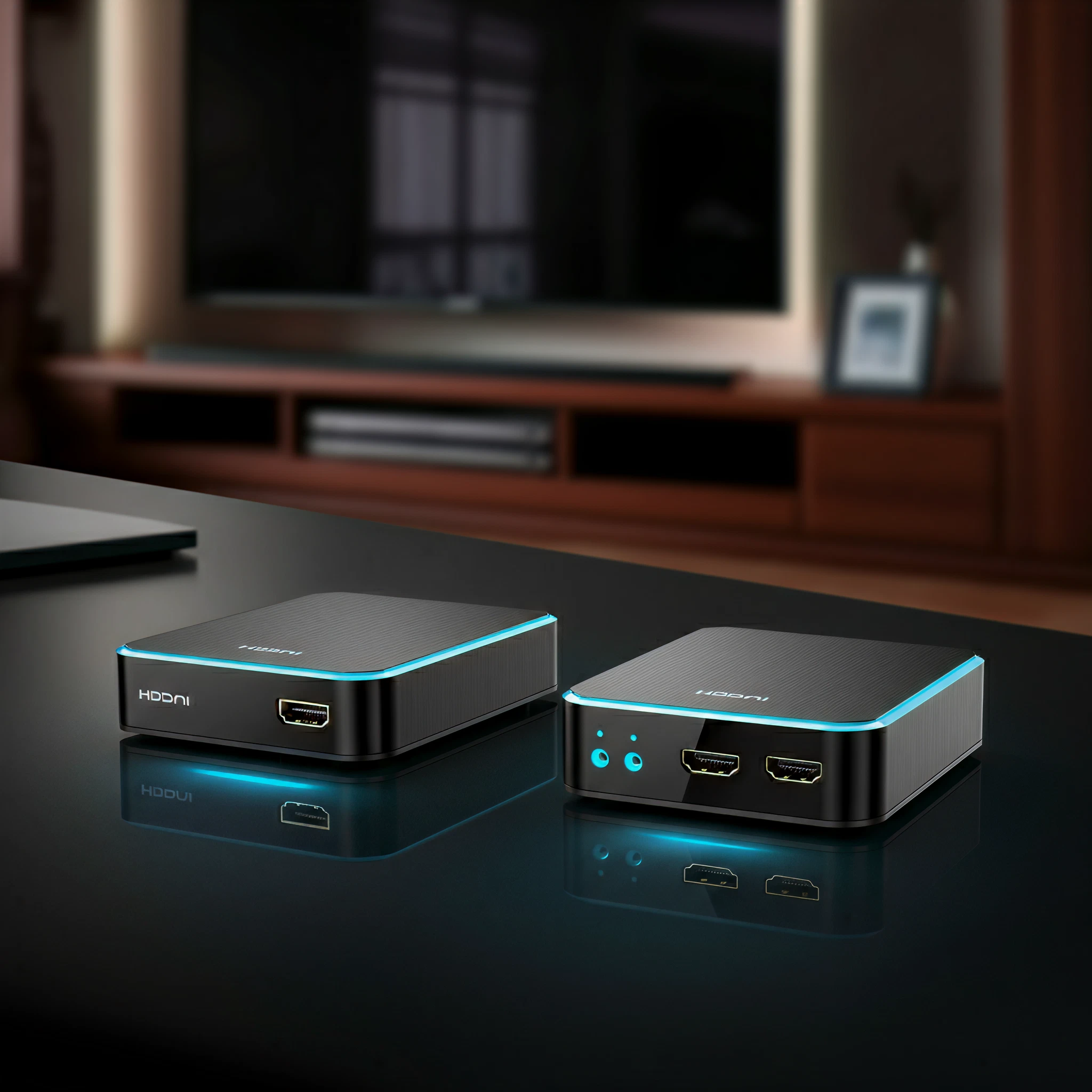If you’re a tech enthusiast, AV professional, or home theater aficionado, you know the importance of seamlessly transmitting and receiving high-definition audio and video signals. This is where an HDMI transmitter and receiver come into play. Whether you’re creating a stunning home theater setup or managing professional AV systems, these devices can dramatically improve your experience. Here’s a complete guide about what they are, how they work, and why they’re indispensable for modern-day systems.
What is an HDMI Transmitter and Receiver?
An HDMI transmitter and receiver pair serves as a bridge to wirelessly or over cables transmit high-definition audio and video signals from a source device (like a Blu-ray player, gaming console, or PC) to a display device (like a TV or projector).
- HDMI Transmitter: Sends the HDMI signal from the source device.
- HDMI Receiver: Captures the transmitted signal and reproduces it on a display.
Together, the transmitter and receiver eliminate the hassle of long HDMI cables or deliver connectivity in situations where running cables may not be feasible.
How Do They Work?
The functionality of HDMI transmitters and receivers relies on signal encoding and decoding. Here’s the step-by-step process of how they operate:
- Signal Transmission
The transmitter takes the HDMI data from the source device. This includes both audio and video signals.
- Encoding
The transmitter compresses and encodes the signal into a format suitable for wireless or extended-range wired transmission.
- Signal Broadcasting
The formatted data is sent over a medium (e.g., wireless radio frequencies, infrared, or wired connections) to the receiver.
- Decoding and Display
The receiver decodes the transmitted data and converts it back into HDMI format so it can be displayed on the output device (TV, monitor, or projector).
This happens in near real-time for a seamless experience with minimal latency.
Where to Use HDMI Transmitters and Receivers
These gadgets can be found in a variety of settings, from casual home usage to cutting-edge commercial systems.
1. Home Theaters
Enhance your home theater by running a wireless setup. Connect your Blu-ray player, gaming console, or video streaming device to your projector or 4K TV without the clutter of cables.
2. Commercial Displays
Make presentations smooth and professional. HDMI transmitters and receivers are ideal for slide decks and videos in boardrooms, conferences, and retail signage setups.
3. Gaming Setups
For gamers looking to stream their screen to multiple displays, these devices can reduce the complexity of HDMI cable management and ensure a lag-free gaming experience.
4. Events and Outdoor Displays
Outdoor gatherings with large screens can benefit significantly from HDMI transmitters and receivers. These devices allow for longer distances between the source hardware and display screens, making them crucial for event organizers.
What Are the Benefits of Using HDMI Transmitters and Receivers?
HDMI transmitters and receivers offer several advantages.
1. Wireless Convenience
No need for those long HDMI cables snaking across the room. A wireless system provides a streamlined, cord-free environment.
2. Extended Range
Regular HDMI cables can only transmit signals over a limited distance before losing quality. Transmitter and receiver systems can overcome that limitation, covering impressive ranges (even as far as 100 feet or more).
3. High-Quality Video and Audio
Modern HDMI transmitter and receiver pairs support up to 4K UHD resolutions and high-definition audio formats like Dolby Atmos, ensuring excellent quality at both ends.
4. Easy Installation
These systems are typically plug-and-play, making them accessible even for non-technical users.
5. Reduced Cable Clutter
Perfect for minimalist setups, they reduce the number of cables around the room, especially in home theaters or meeting rooms.
Key Factors to Consider When Buying an HDMI Transmitter and Receiver
When selecting a transmitter and receiver, keep these essential factors in mind to ensure the best experience.
1. Resolution Support
- Ensure the device supports the resolution you require. For example, if you’re working with a 4K TV or projector, pick a pair that’s UHD 4K capable.
2. Range
- Choose a system that can transmit signals over the required distance. Wireless devices often vary in range from 30ft to 100ft or more.
3. Latency
- Minimal latency is crucial for gaming and real-time applications. Look for systems that advertise low or zero-latency performance.
4. Connection Type
- Some devices use radio frequencies, while others use infrared. Consider your environment and existing systems to pick the best fit.
5. Compatibility
- Check whether the setup is compatible with your devices (gaming consoles, TVs, projectors, etc.).
6. Price and Warranty
- Consider your budget while looking at features. Also, ensure the product comes with a trustworthy warranty for added peace of mind.
Popular HDMI Transmitter and Receiver Brands
If you’re ready to make your own HDMI setup smarter, here are some reliable brands to explore:
- J-Tech Digital
- IOGEAR
- Nyrius Aries
- OREI Wireless
- Gefen
Final Thoughts
Whether you’re building a top-notch home theater, enhancing your gaming setup, or managing AV for a professional environment, an HDMI transmitter and receiver can make your connectivity seamless and efficient. These powerful tools provide wireless convenience, extended range, and top-tier quality for an advanced multimedia experience.
Take your entertainment and presentations to the next level by exploring HDMI transmitters and receivers that fit your budget and needs. Make sure to evaluate key features like range, resolution, and compatibility before making a choice.
Want to unlock the potential of seamless AV solutions? Start experimenting with HDMI transmitters and receivers today!
Suggested Images
- Introduction Section: Image of an HDMI transmitter and receiver pair on a desk, with labeled connection ports and a clean background for focus.
- How It Works Section: A flow diagram showcasing the transmission process (source → transmitter → receiver → display).
- Applications Section: Collage-style image illustrating different use cases (home theater, boardroom, gaming setup).
- Benefits Section: Icon-based graphic highlighting wireless connectivity, range, and high-resolution support.
- Buying Guide Section: Image of someone comparing two transmitter-receiver sets with detailed labels.








